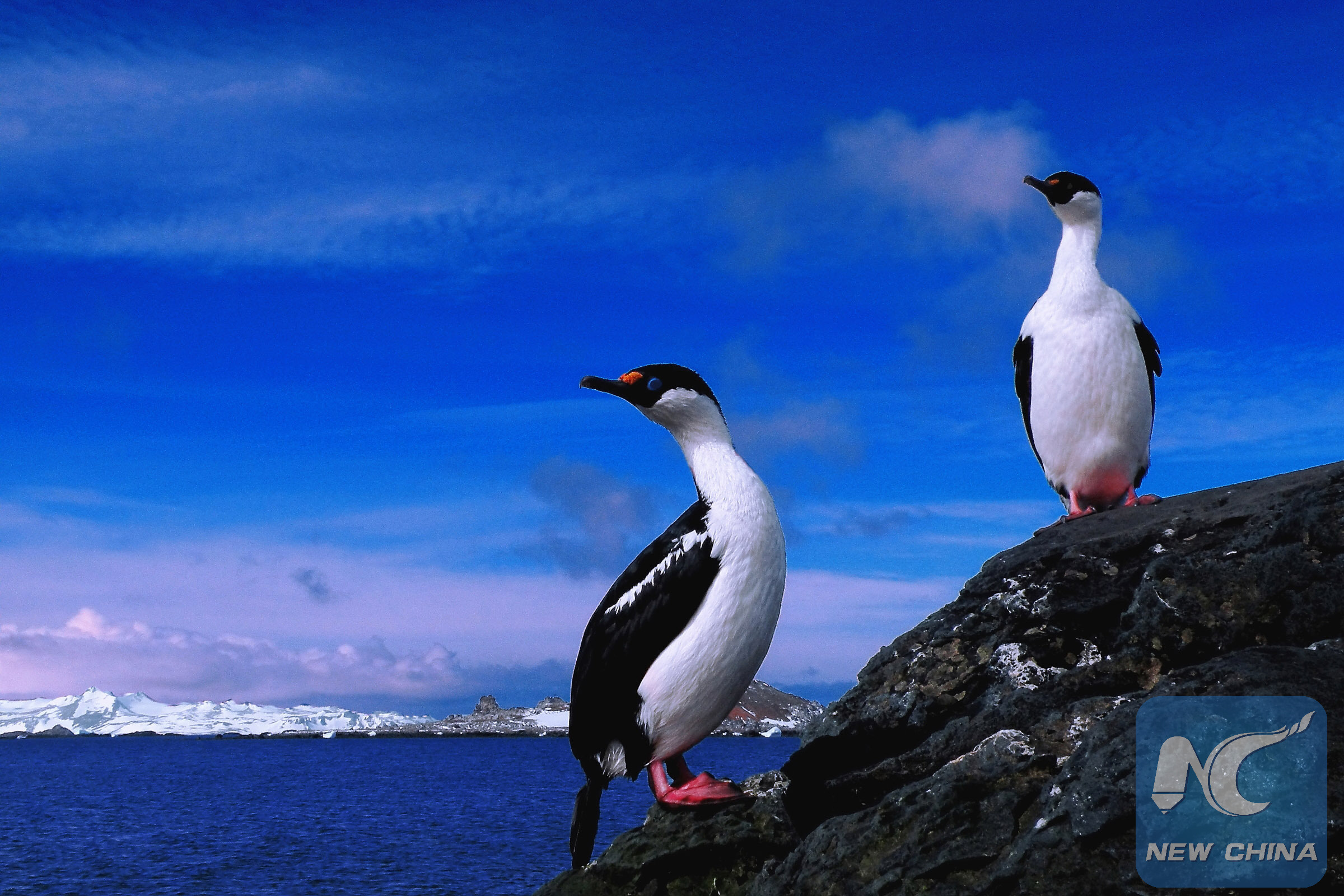
Antarctic shags.
Still remember the "robbers", the "fairies of the south" and the "garbage cleaners" that we introduced in the first episode of the Antarctic seabird series? Well, in this episode, we are going to take you to meet three more species that live on the land of ice and snow.
When encountering a giant petrel, you might wonder how a seabird can be as giant as this: a wingspan of 2.2 meters!
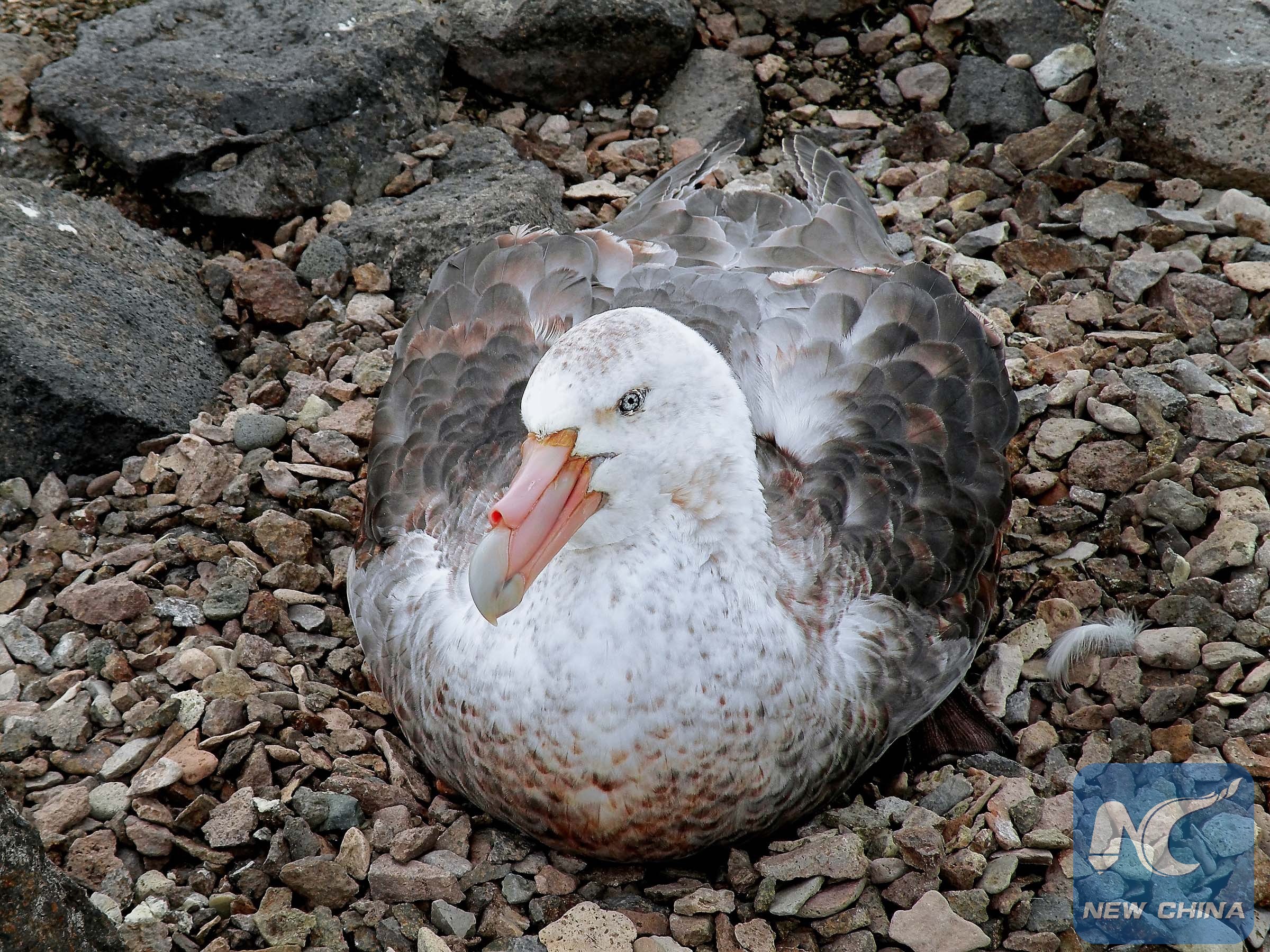
A giant petrel
Weighing between four and five kilograms, a giant petrel has to run up to 10 meters or more before taking off, the same working theory with the aircraft.
Giant petrels are widely known as the Antarctic scavengers, for they mainly live off other animals's rotten bodies, which has given them another name: the stinker. They are fond of flying with ships in order to find opportunities to pick up the trash left by human beings. They also feed on cuttlefish and krill.
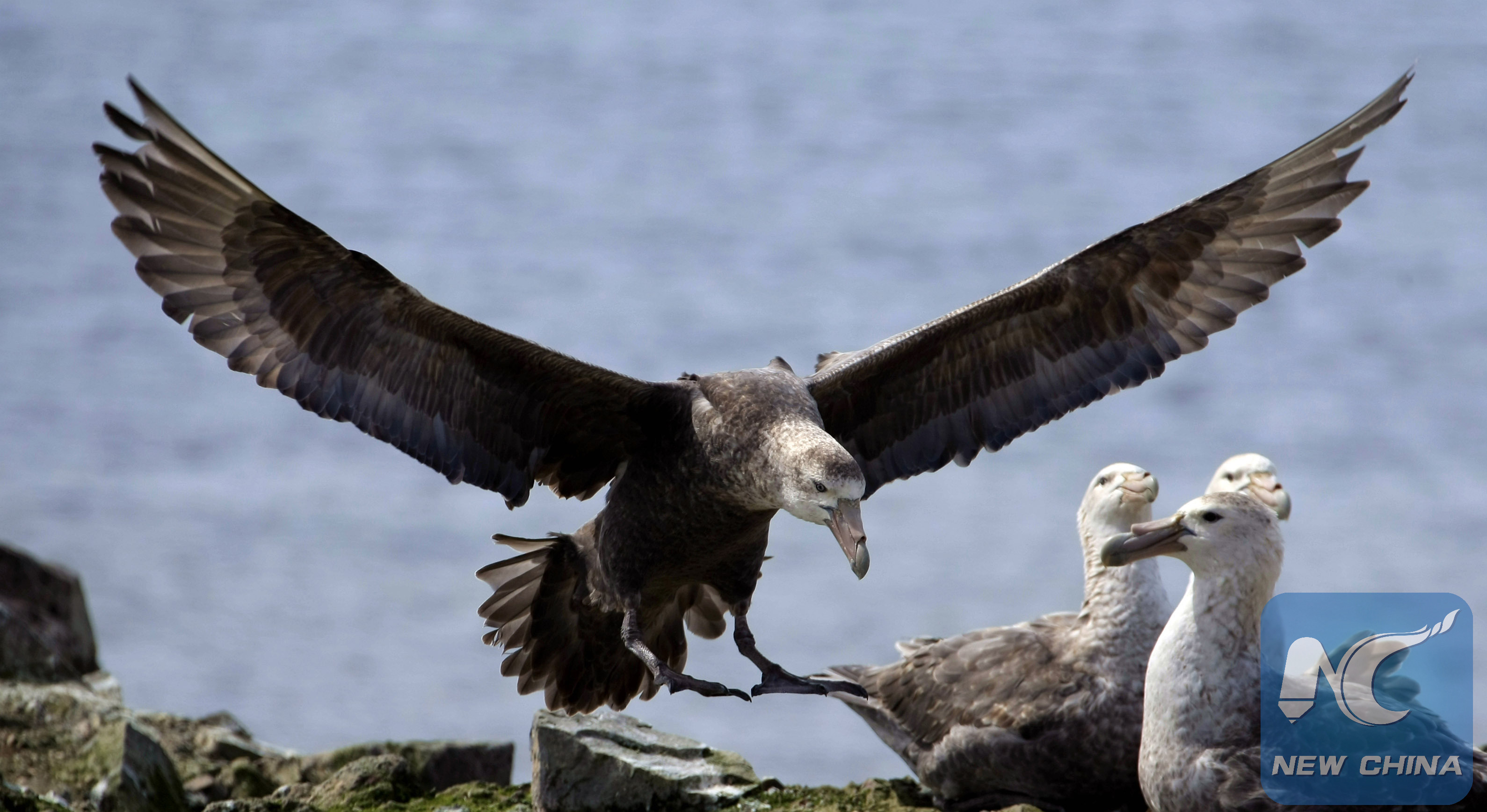
Giant petrels
If you think the giant petrel is big enough, well, the wandering albatross will soon tell you that it is even bigger. Actually, the wandering albatross has the largest wingspan among any living bird: 3.1 meters in average. The widest wingspan that has been verified is about 3.7 meters.
Due to its wide wingspan, the wandering albatross can stay in the air for several hours without flapping its wings. They are sometimes called the "wanderer" for their regular extensive flights from the west of the land all the way to the east.
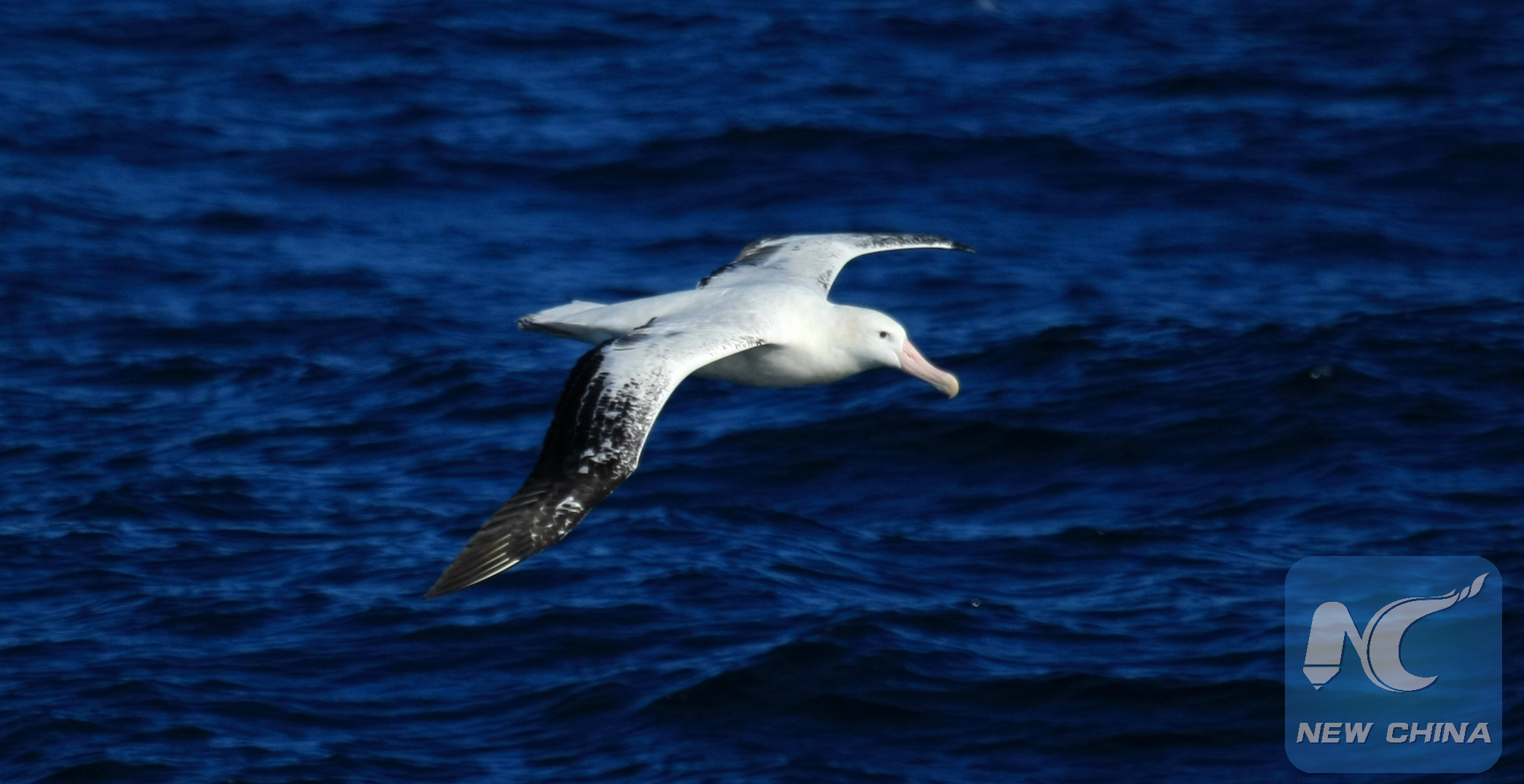
Wandering albatross
The giant seabird is also a good diver, for it can dive as deep as 12 meters beneath the seawater.
The Antarctic shag is easily distinguished from other species by its blue eyes and the orange "nose". Their wingspan can be as wide as 1.24 meters and the body length is 75 meters in average.
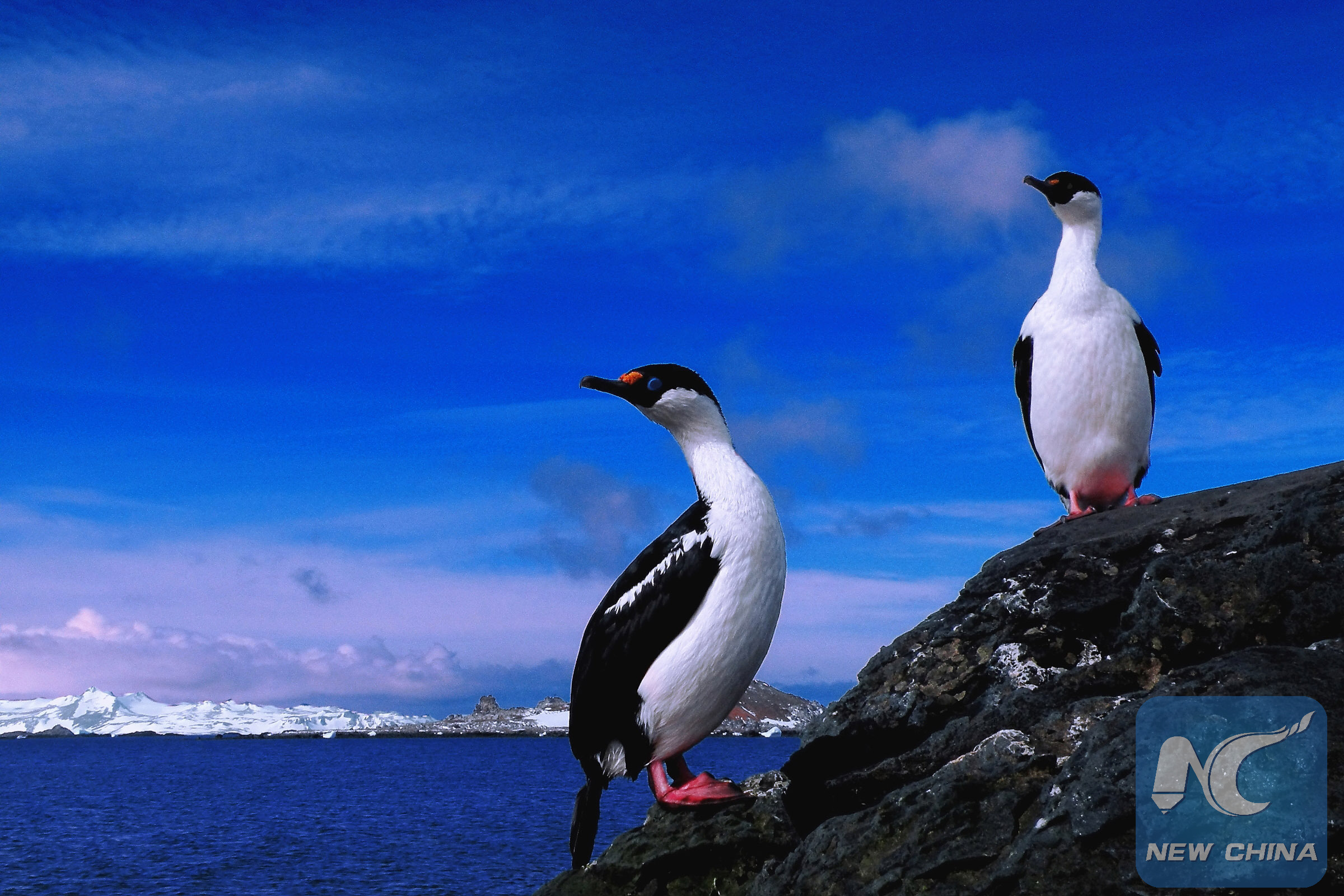
Antarctic shags
There are 12,000 pairs of Antarctic shags living on the Antarctic land and its surrounding islands.
(Photos provided to Xinhua by Miao Xing, researcher with China's 33rd Antarctic expedition, and Mu Lianqing, researcher with China's 32nd Antarctic expedition.)

